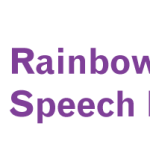Our Blogs
WHAT IS NEURODIVERSITY?
Neurodiversity
‘Neurodivergent’ or ‘Neurodiverse’ are terms used to describe a person or group of people that have a different way of thinking, learning, experiencing and interacting with the world due to underlying variations in their brain development and functioning. The term ‘neurotypical’ might be used to describe someone who is not neurodivergent – their brain development and functioning is what society has historically thought of as “typical”.
Neurodiversity captures many any different medical diagnoses such as Autism Spectrum Disorder (ASD), Attention Deficit/Hyperactivity Disorder (ADHD), Developmental Language Disorder (DLD), Dyslexia, Intellectual Disability and Apraxia.

(Image from this site: https://neuroleadership.com/your-brain-at-work/five-ways-for-neuro-inclusivity
The neurodiversity movement centres around the idea that brain differences are part of being human and this diversity should be celebrated by fostering environments where these differences are understood, accepted and supported.
What do some of these differences look like?
Neurodivergent people may have differences in the way their brain receives and processes information (such as a heightened sensory awareness). This leads to them experiencing the world differently, and subsequently responding differently. These responses can present as differences in communication styles, for example:
- A neurodiverse mind can be very busy! Someone might say something that triggers an explosion of different thoughts in a neurodiverse mind which the person needs to share straight away. To a neurotypical person this might seem rude or odd, especially if they have interrupted the conversation to share something that is seemingly unrelated to the topic. To the neurodiverse person however, this represents a desire to share their emotional journey and connect with their communication partner by expressing a thought quickly before it disappears from them.
- Neurodiverse people may also have different ways of communicating through body language which can lead to misunderstandings. Body language refers to how we use our facial expressions, tone of voice and body movements to communicate messages. A neurodiverse person might show they are listening by looking away, staring intently, or moving their body, whereas a neurotypical person might show they are listening by making eye contact and sitting still.
- Some neurodiverse people might find it challenging to interpret indirect language such as sarcasm, metaphors and implied meaning. Mixed messages, where someone’s verbal language doesn’t match their body language, can be very confusing (For example saying “I’m fine” with a sad facial expression and tone). Having to constantly interpret mixed messages and non-literal language can take a lot of time, energy and can easily result in communication breakdown and subsequent negative feelings about communication.
Communication differences between neurotypical and neurodiverse people can result in plenty of opportunity for misunderstanding. However, if neurotypical people make the effort to learn about these different communication styles they can help to repair miscommunications when they happen. Neurodiverse communication styles are just different and part of what makes being human so interesting.
Written by Sam Bolton Speech Pathologist
Reference
Crompton et al (2020). Autistic peer-to-peer information transfer is highly effective. Autism, 24 (7).
https://journals.sagepub.com/doi/full/10.1177/1362361320919286
Resources:


